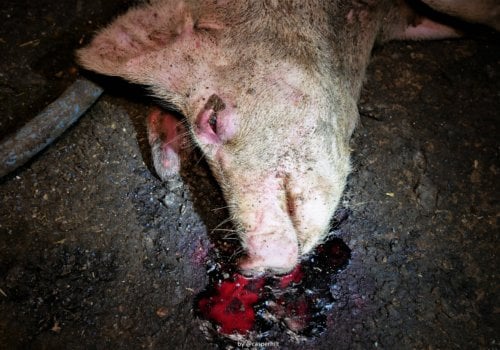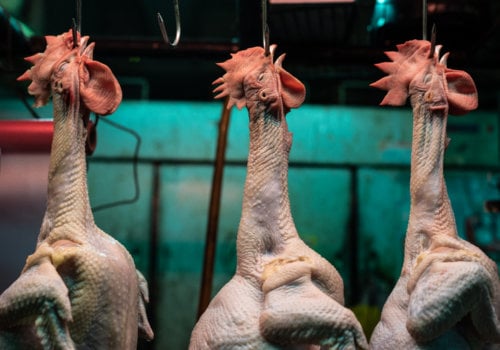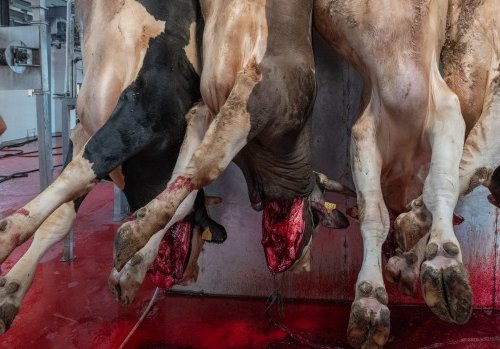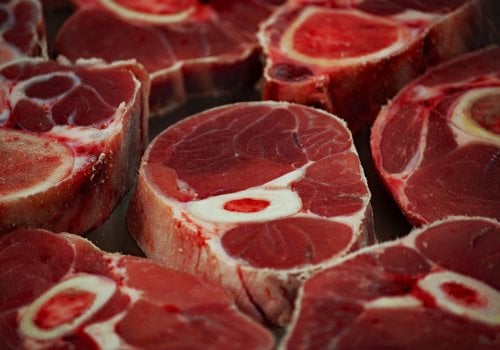Factory-farm sheds crowded with thousands of chickens, pigs, or cows; bloody abattoirs; and “bushmeat” markets selling the flesh of wild animals are all breeding grounds for pathogens. The problem is global, and it isn’t going away – 60% of known infectious diseases in humans are transmitted from other animals.
Here is just a selection of the human disease outbreaks that are linked to eating animals.
2019: COVID-19
The COVID-19 pandemic is thought to have originated at a “wet market” in the Chinese city of Wuhan in late 2019. By January 2024, over 7 million people had died from COVID-19 globally. Like other types of coronavirus, it began in other animals before being transmitted to humans. Research published in Nature links it to bats and pangolins, and both these species were sold for their flesh at the Wuhan market.
2014: Ebola Virus Disease
Ebola virus disease is caused by a virus transmitted to humans from wild animals such as bats, porcupines, and primates. Between 2014 and 2016, over 11,000 people in West Africa died of the condition.
2012: MERS
Middle East respiratory syndrome (MERS) is another disease caused by a coronavirus. The respiratory illness was first reported in Saudi Arabia and has now spread worldwide, killing 858 people to date. The World Health Organization advises that camels have played a role in spreading the virus to humans and has issued guidance on avoiding the consumption of camel milk and meat.
2002: SARS
Severe acute respiratory syndrome (SARS) is a disease caused by a coronavirus that originated in wild animals – bats and civet cats – and was transmitted to humans. The SARS pandemic started in China and resulted in an outbreak of deadly pneumonia that killed 774 people. It’s thought that the virus may also have begun in a wet market.
1997/2020: Bird Flu
The H5N1 strain of bird flu originated in farmed geese before infecting chickens raised for meat and eggs. Some strains of bird flu can be transmitted from birds to humans, and the deadliest of these are H5N1 and H7N9, which have killed hundreds of people in China and around the globe. The virus can be passed on to humans who touch the feathers, flesh, or faeces of infected birds.
A new outbreak began in 2020 after gene-swapping occurred in viruses that infect chickens and other birds exploited on farms and those that occur in wild birds. In 2022, 67 countries across five continents reported avian influenza outbreaks in wild birds and those exploited on farms. The latest outbreak has also killed seals, sea lions, penguins, a walrus and a polar bear and has infected minks, foxes, cows, goats, humans, and other mammals.
1995: vCJD
Variant Creutzfeldt-Jakob disease (vCJD) is a rare condition causing brain damage in humans. It’s contracted by eating the flesh of cows who have bovine spongiform encephalopathy (BSE), or “mad cow” disease. Cows, who are herbivores, developed BSE after being fed the brain stems of other cows. Globally, 226 people have died of vCJD.
Reduce the Risk of Pandemics: Go Vegan
To help prevent future outbreaks of killer diseases, we must stop confining, abusing, and killing animals for their flesh in factory farms, markets, and abattoirs. The next pandemic could be even worse than COVID-19 – so we must do all we can to stop it happening:




















